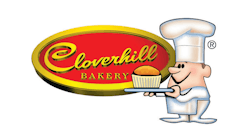Pastries hold their own; Is vending missing out on a chance to upsell?
Wellness may be grabbing the headlines, but Americans still have a sweet tooth. One product segment that continues to hold its own for most vending operators, despite the twin challenges of a recession and the wellness movement, has been pastry.
Pastry sales have taken their hit along with other vend product segments in recent years, but the Automatic Merchandiser State of the Vending Industry Report, published in June, reported baked goods sales were flat, making them one of the better performers in the candy/snack/confections segment. The only candy/snack/confections segments to outperform pastries were crackers, food snacks and nuts and seeds, all of which are much smaller product segments.
Pastries have also been price point leaders in the critical candy/snack/confection segment. Candy and snack manufacturers introduced numerous large size packages in recent years to allow vending operators to offer higher prices. However, based on data provided by Management Science Associates, which tracks item level vending sales, the only large size product to win a spot in the top 20 selling items in 2011 was a pastry product, Cloverhill Bakery’s 4-ounce Big Texas Cinnamon Roll.
The Cloverhill Bakery item, selling at an average price of $1.06 in 2011, was the only top selling item in the candy/snack/confection segment with an average selling price over $1.00, according to the State of the Vending Industry Report.
In examining baked goods sales in greater detail, 1-year sales performance varied by category. Baked goods represent the third largest candy/snack/confection segment after confections and snacks. Within the candy/snack/confection segment, the larger categories split about evenly among those that fared well and those that did not: sweet rolls, honey buns, and crème-filled snacks did well while cereal snacks, Danish, and donuts/gems fared poorly.
Given the challenged state of the vending industry, pastry sales are holding their own. This observation was shared by randomly selected operators, brokers, distributors and manufacturers interviewed by Automatic Merchandiser.
“There’s still a great market for it,” said Tim Garner, national sales manager for vending at Hostess Brands, which carries both fresh and frozen pastry. Garner admitted that the wellness movement has had an impact on the demand. He said wellness is a bigger factor on the coasts while the Midwest and Southeast remain the stronger regions for pastry sales.
Southeast sees strong pastry sales
Pastry sales have been the strongest segment in the candy/snack/confections business for Buffalo Rock Co. in Birmingham, Ala., according to Dick Hanson, executive director of sales and marketing. The region of the country he serves – the Southeast – has historically been one of the strongest pastry markets in the U.S. Nevertheless, Hanson cannot explain why his pastry sales are up 7 percent this year, leading all other candy/snack segments. The company’s overall vending sales have been flat.
Buffalo Rock mainly carries Cloverhill Bakery fresh products. According to Hanson , the Cloverhill Honey Bun is the top selling pastry item for the company, priced between 90 cents and $1.25.
Most of the accounts Buffalo Rock serves are industrial, which historically are strong pastry accounts. Nevertheless, the company has been required to follow nutrition rules in many accounts, some of which mandate 25 percent “good for you” offerings.
Randy Sikes, president of Vendors Supply, the Columbia, S.C.-based vend product distributor, said fresh pastry continues to dominate the vend pastry business in the Southeast. However, he said product quality has improved for frozen pastry in recent years. He said it is harder than ever to tell a product was shipped from the distributor to the operator in a frozen state.
Frozen-shipped pastries typically require operators to place their own expiration dates on the products after they are thawed.
Sikes noted pastries, like other vend product segments, are getting new growth from micro markets. He said traditional vend products are being ordered for micro markets, along with larger packages, such as multi packs. “The mix of products is still in its infancy,” Sikes said of micro markets.
Midwest: Demand varies
Sanese Services Inc. based in Columbus, Ohio has been a leader in promoting wellness, but customers still want pastry, noted Matt Warner, purchasing manager. The company carries mostly fresh pastry in its ambient snack machines. The only frozen pastry the company carries is what goes in the cold food machine, which represents a small portion of the pastry sales.
Warner was among several operators who noted that ethnic and low-calorie offerings have not fared well in pastries. The company tried Hispanic pastries when some of the manufacturers offered it several years ago. He said the Hispanic products did well in certain accounts.
One problem with Hispanic pastries, noted Rusty Jackson, vice president of special markets for Cloverhill Bakery, is that Hispanics encompass a variety of ethnic groups who don’t share the same tastes. “A Mexican pastry is not the same thing a Latino in Miami eats,” he said.
Sanese Services never tried the 100-calorie pastry that was introduced several years ago since it had a short shelf life and required the company to place an expiration date on the product. “It’s one of those steps I don’t need to mess with in the snack machine if I don’t have to,” Warner said of the 100-calorie pastries.
Pastries have been losing facings in recent years noted Jeff Smith, president, All Star Services Inc. in Port Huron, Mich. “There has been a lot of turmoil in the pastry business,” he said, referring to the financial issues that some pastry companies have experienced. The company primarily carries fresh pastries and uses frozen pastries as back up.
Smith said his company has better data to decide what items to carry in the machine, thanks to wireless reporting. “We’re more account specific as far as our customers’ desires,” he said.
Smith said “better for you” pastries did not sell well when he tired them. This does not mean he won’t try them in the future. “It rests with the consumer,” he said.
All Star Services has been aggressive with micro markets, but Smith has not found pastries to be great sellers in the markets, to his surprise. One reason is that fresh food has gained a much larger share of the micro market business than other items, compared to a vending bank.
Vending operators and suppliers in other regions have not experienced as much strength in pastries as the Southeast and parts of the Midwest.
Bud Burke, a sales rep for Gibbstown, N.J.-based Thayer Distribution, which serves the New York, New Jersey and Mid Atlantic market, said overall, pastry sales are down 6.1 percent this year. He said frozen, which represents the majority of the business, has fallen by 7.8 percent while fresh pastry is only down by 0.6 percent. He cited location downsizing, competition, and customers looking for healthy alternatives, and increasing product costs as reasons for the decline.
Regional favorites play a role
Some markets have regional pastry favorites. One of the more notable regional lines is Tastykake, a Philadelphia, Pa. favorite which is now carried by Flowers Foods Inc. Flowers Foods acquired Tasty Baking Co. last year. Tastykake Butterscotch Krimpets and Peanut Butter Kandy Kakes are still the top selling pastries for One Source Office Refreshment Service Inc. in Pottstown, Pa., according to Bob Betz, owner of the Philadelphia area company.
For Betz, pastries remain a top seller. He said consumers see it as a good value because the vend pastries he carries are competitively priced with what’s available in convenience stores. “The consumer sees that as value,” he said.
Betz did not have a lot of luck with Hispanic pastries when he offered them three and four years ago, even in accounts with a lot of Hispanics.
Nor did he have luck with the low calorie pastries when he tried them five years ago. The wellness products mostly came in smaller portions and carried hefty price points in relation to the package size. “The vending customers don’t seem to see value in that product,” Betz said. “They don’t see the value of that price point in a vending machine.”
Vend West in Coos Bay, Ore. serves a largely industrial customer base in the Northwest and has not seen much fallout because of wellness in the last two years, noted Lou Leberti, owner. A fallout came three years ago when schools stopped carrying many traditional items. “Our industrial sites aren’t that wellness conscious yet,” he said. He does get requests for wellness products from location managers, but the sell-through isn’t there from the end user.
The restrictions in schools, hospitals and prisons has had some impact on what industrial locations are asking for, noted John Chavez, operations manager at Texas Refreshments, an 8-route operation in Midland, Texas. More industrial customers are requiring healthier options. But in locations with few restrictions, pastries remain top sellers, Chavez said.
Texas Refreshments mostly carries fresh pastry; frozen pastry is only used for back up, Chavez said. He said customers are accustomed to fresh pastry from the convenience stores, and they usually prefer it to frozen pastry.
Fortunately, the oil fields that Chavez serves have not imposed a lot of restrictions, are adding jobs and the work sites take as many as three shipments of pastries per week. “We’ve seen a huge increase in it,” Chavez said. “These guys get out there in the oil fields and they’re looking for something (filling) to eat.”
Competition from bagged cookies
“The market is not what it was in the mid 1990s,” said Cloverhill’s Jackson. Besides the downsizing that has affected all vend product categories, pastry has faced competition from bagged cookies.
Concurring with this observation was Mike Knowlton, director of vending sales for Kellogg Away From Home. Kellogg’s Rice Krispies Treats and Pop-Tarts are shelf stable snacks that often find their way into traditional pastry facings.
In the last two years, Kellogg enlarged the Rice Krispies package and shaped it more similar to a pastry package, Knowlton said. This helped drive sales even more.
Time for an upsell?
Some observers think the vending industry has an opportunity to improve pastry sales by adding better quality products at higher price points. Bill Skeens, owner of Prairie City Bakery, which supplies frozen pastry to foodservice channels, claims other retail channels have benefitted from better quality offerings at higher price points. The company exhibited at vending trade shows more than a decade ago, but did not find the vending industry receptive to its product line because of its higher-than-average price points. Prairie City products are nevertheless still available to vending operators from foodservice distributors.
Skeens points to the growth of specialty retail bakeries in many parts of the country. He claims that specialty coffee stores, convenience stores, drug stores and other retailers have also increased pastry sales by introducing higher quality, higher priced products.
Skeens further believes that the specialty coffee industry has played a developmental role in building the market for better quality pastries. He notes that specialty coffee stores have introduced better quality pastries in recent years.
“I think that this is something that the vending industry is missing,” Skeens said.
Skeens has paid attention to the rising vend prices, and he thinks vending operators might become more aggressive with higher priced pastries. He also believes that micro markets are creating an opportunity for higher priced pastries.
While the pastry category has suffered somewhat from stricter nutrition regulations and from the account downsizing, consumers still like pastries. Fortunately for the vending industry, a cadre of well know product manufacturers, continues to provide the quality and variety that consumers are looking for.
Because the vend pastry offers a good value to consumers, operators have been able to sell pastries at price points that delivers a reasonable profit margin.
In the meantime, product manufacturers continue to test new pastry products for vending, which keeps the segment interesting for both operators and their customers.







